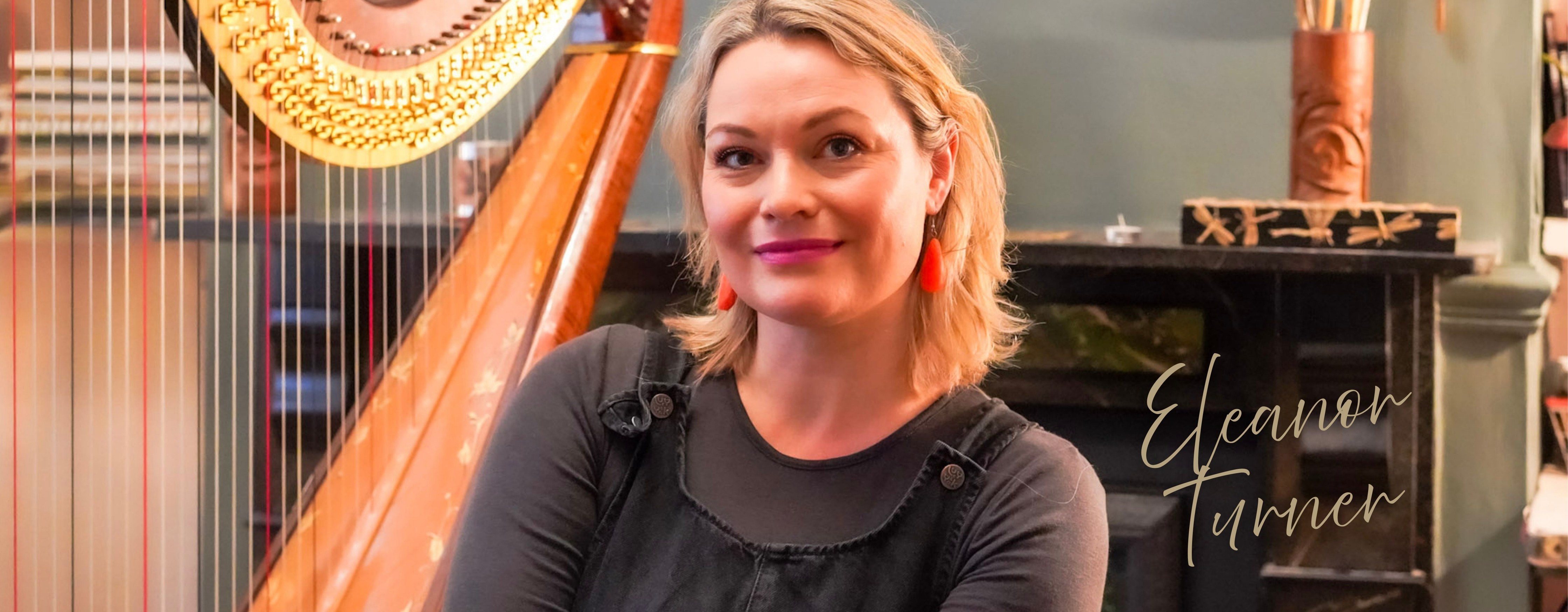Tāla Tarang
Introducing Indian raags and rhythms to lever and pedal harpists in an accessible way.
Welcome to our Class
This workshop brings together the experience that Mendi Singh and Eleanor Turner have had through working together for the past five years. Tāla Tarang have combined Eleanor’s classical western harp playing background to Mendi’s Indian classical training. Both artists create, record and tour with global musicians including Take That, Peter Gabriel, Ananda Shankar, Ranagri, Tony Christie, Tertia May, Jonny Greenwood and Voces8. As Mendi says, “as we’ve been playing together, it’s just like the experience, the knowledge, the feeling of the instruments are resonating more deeply in myself, the harp and the tonality.” Welcome to our class - we hope you enjoy learning about Indian classical music, Bollywood and creating your own combinations of sonic flavours!
Ravi Shankar
“Through rich melodies in our music, every human emotion, every subtle feeling in man and nature can be musically expressed and experienced.” Ravi Shankar
© Copyright Eleanor Turner
Class Content
1. Demo by Mendi of the Rhythmical Language of the Tabla and the different sounds.
2. Ellie demonstrates an Alap and Jor in Raag Bhairav (listen to the track 'Bhairav Morning Mood' above) - warm up (participants on mute)
3. Take a listen to and look at our structured composition, Lord Ganesh Mantra (see below video)
4. Participants (harp) explore an Alap in Charukeshi (used in Lord Ganesh Mantra)
5. Mendi shows Kaharva cycle (used in Lord Ganesh Mantra - popular beat in Bollywood!)
6. If anyone would like to bring a tune to try with Mendi playing a beat cycle, please do!
7. Q and A
Lord Ganesh Mantra
This composition has a Bhangra feel, a D drone (which turns into a rhythmic D-centric bassline) and comprises of two main sections:
1. 'Alap' on the harp...at the end of this, the harp presents the 'Ganpati Bappa Morya' motif, leading the tabla entry
2. Harp and Tabla 'Gat' (the structured composition*) in three parts:
FIRST PART
- Gentle Bhangra feel on the Kaharva beat cycle. 4 phrases of equal length
- Phrase 1 of 4 = tabla solo. Harp joins in with the 'Ganpati Bappa Morya' motif
- Phrases 2, 3 and 4 = harp and tabla with harp playing the melody over a D drone
SECOND PART
- 'Double Time' on the tabla, which inspires the same straight, 'perpetuum mobile' feel on the harp
- Phrase 1 of 4 = tabla solo. Harp joins in with 'Ganpati Bappa Morya' again.
- Phrases 2, 3 and 4 = harp and tabla with harp playing the melody and repetitive patterns over a D drone
- Extra 5th phrase! A chance for some improvisation, cross rhythms....or just bring the FIRE in your playing!
THIRD PART
- Bhangra vibe on the tabla with a distinctly pop edge, you'll recognise this beat from Bollywood!
- Phrase 1 of 4 = tabla solo. Harp joins in with 'Ganpati Bappa Morya' again.
- Phrases 2, 3 and 4 = harp and tabla with harp playing the melody but with a richer feel and more harmony. Ellie is Scottish by heritage so she includes some Scottish rhythmic elements to this finale - you could choose any feel that you relate to or wish to express!
KEY POINTS
Interesting to know: Ganpati Bappa Morya (spelled in various different ways in different places) is an integral part of devotion to Lord Ganesh. Moyra Gosavi was a famous loyal devotee of Lord Ganesh in the 14th century.
*The 'alap' in Northern Indian classical music is always completely free time and begins slow. In Sanskrit, 'Alapa' means “conversation”. The improvised, melodic alap should reveal the characteristics of a raga.
*The 'gat' is where the structured part of the music begins (usually there is another section of music in between the alap and the jat, called the jhalla where a pulse starts to form)
Owing to this composition being fairly fixed and therefore losing some of the natural elements that you would find in Indian classical music, Ellie tends to experiment with the tonality a little, for example F natural and sharp are both used, occasionally an E flat in the introduction. You can take whichever approach you like. If you want to present a more classical alap, keep the F sharp and the B flat fixed.
This taal (the 'kaharva' or 'keherwa') lends itself to dance and is frequently used for Bollywood and folk music as well as classical.
Mendi has chosen a popular groove that is mostly played in Punjabi music. It originates from the North Indian style of folk beats and is popular in Bollywood music. It’s a joyous beat to work with and should leave you feeling satisfied and uplifted.
The mantra for Lord Ganesh is traditionally recited 108 times (and is said to remove obstacles) but in this version, we only play it 14 times!
OTHER FACTS
Charukesi/Charukeshi literally means ‘with beautiful hair’ and it is perfect for expressing longings and yearnings in love, piety, and pleading.
Mendi will show you how to clap and recite the Taal Kaharva, which is an 8 beat cycle
Kaharva is the second most played taal on the tabla. On the first beat there is a taali (clap) and on the 5th beat Khali is shown by moving the right hand (for right handed people) in the air or turning the hand and placing the back of that hand on the palm of the other hand.
SHEET MUSIC
Here is the PDF of the harp part for Lord Ganesh Mantra
A sheet showing a few ideas of Raags and Modes
